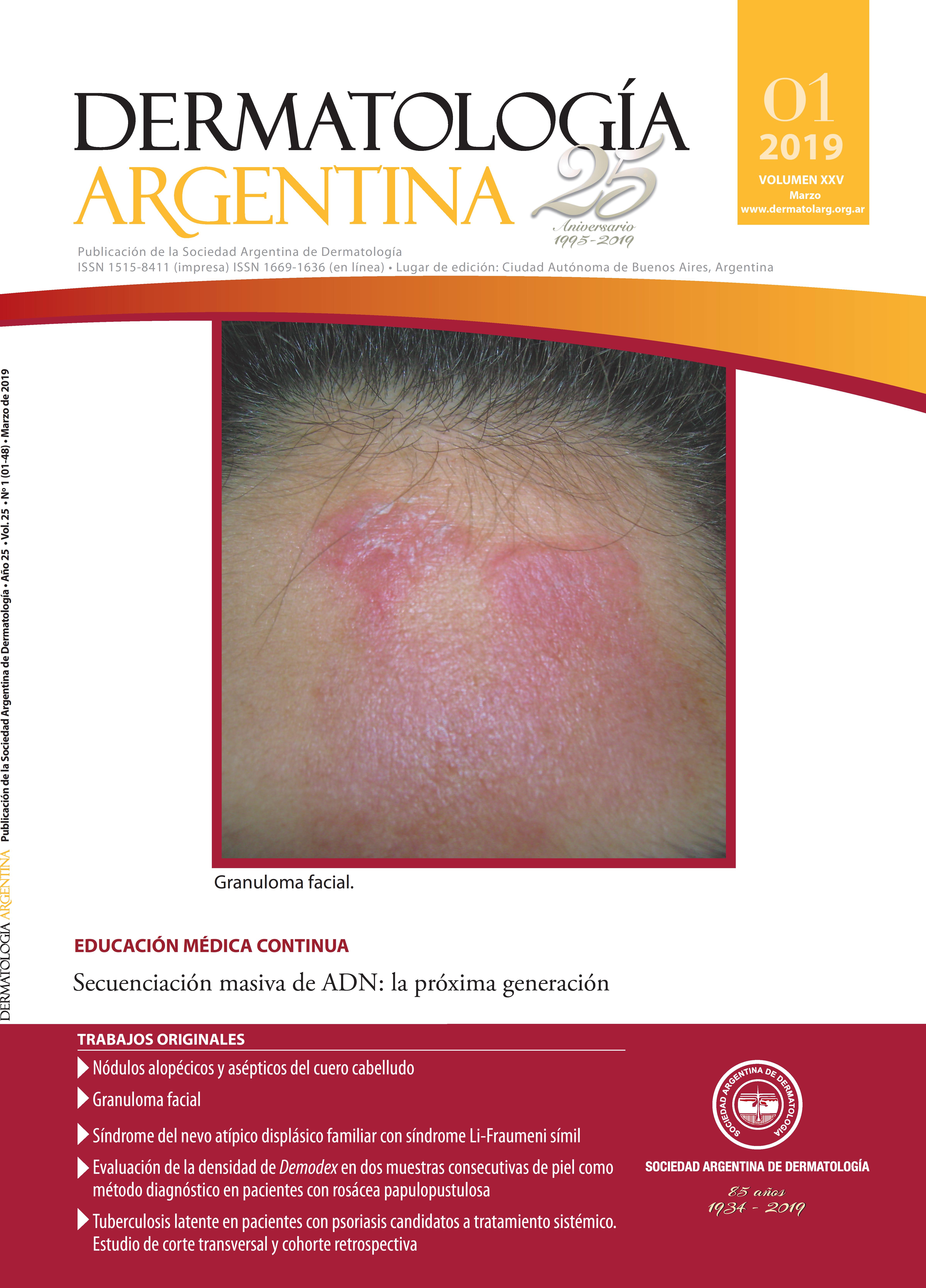DNA massive sequencing: the next generation
Keywords:
massive sequencing, next generation sequencing, sequencing by synthesis, exome, genomic variants, single nucleotide polymorphismAbstract
Sequencing means the analysis of several molecular entities, to know their precise nucleotide composition. With this tool, it is possible to evaluate a complete genome (WGS), an exome (WES), a transcriptome (RNA-seq), gene panels and genomic methylation patterns. Massive sequencing technologies, developed after Sanger sequencing method, known as next generation sequencing (NGS), can sequence huge quantities of DNA and include: pyro-sequencing, union sequencing and sequencing by synthesis. Their main advantage is their ability to sequence large quantities of DNA fast and at a relative low price. All NGS technologies have four basic steps: sample preparation (DNA template), cluster generation, sequencing and data analysis. Massive sequencing technologies allow characterization of germinal and somatic variants in individual patients and driver mutations in big cohorts, identification of germinal predisposition mutations, as well as those related with environmental factors. Large case-controls population studies of genomic association (GWAS) employ massive sequencing for variant analysis.
References
I. Ding L, Wendl MC, McMichael JF, Raphael BJ. Expanding the computational toolbox for mining cancer genomes. Nat Rev Genet 2014;7:1-15.
II. Metzker M. Sequencing technologies-the next generation. Nat Rev Genet 2010;11:31-46.
III. Davies H, Bignell GR, Cox C, Stephens P, et ál. Mutations of the BRAF gene in human cancer. Nature 2002;417:949-954.
IV. Raphael BJ, Dobson JR, Oesper L, Vandin F. Identifying driver mutations in sequenced cancer genomes: computational approaches to enable precision medicine. Genome Med 2014; 6:1-17.
V. Sims D, Sudbery I, Ilott N, Heger A, et ál. Sequencing depth and coverage: Key considerations in genomic analysis. Nat Rev Genet 2014;15:121-132.
VI. Biesecker LG, Green RC. Diagnostic clinical genome and exome sequencing. N Engl J Med 2014; 370:2418-2425.
VII. Barrett JH, Iles MM, Harland M, Taylor JC, et ál. Genome-wide association study identifies three new melanoma susceptibility loci. Nat Genet 2012;43:1108-1113.
VIII. González-Pérez A, Mustonen V, Reva B, Ritchie GRS, et ál. Computational approaches to identify functional genetic variants in cancer genomes. Nat Methods 2013;10:723-729.
IX. Carter H, Douville C, Stenson PD, Cooper DN, et ál. Identifying Mendelian disease genes with the variant effect scoring tool. BMC Genomic 2013;14(Suppl 3):S3.
X. Teri M. Genomewide association studies and assessment of the risk of disease. N Engl J Med 2010;363:166-176.
XI. Shain AH, Yeh I, Kovalyshyn I, Sriharan A, et ál. The genetic evolution of melanoma from precursor lesions. N Engl J Med 2015; 373:1926-1936.
XII. Steensma DP. The beginning of the end of the beginning in cancer genomics. N Engl J Med 2013;368: 2138-2140.
Downloads
Published
Issue
Section
License
El/los autor/es tranfieren todos los derechos de autor del manuscrito arriba mencionado a Dermatología Argentina en el caso de que el trabajo sea publicado. El/los autor/es declaran que el artículo es original, que no infringe ningún derecho de propiedad intelectual u otros derechos de terceros, que no se encuentra bajo consideración de otra revista y que no ha sido previamente publicado.
Le solicitamos haga click aquí para imprimir, firmar y enviar por correo postal la transferencia de los derechos de autor











